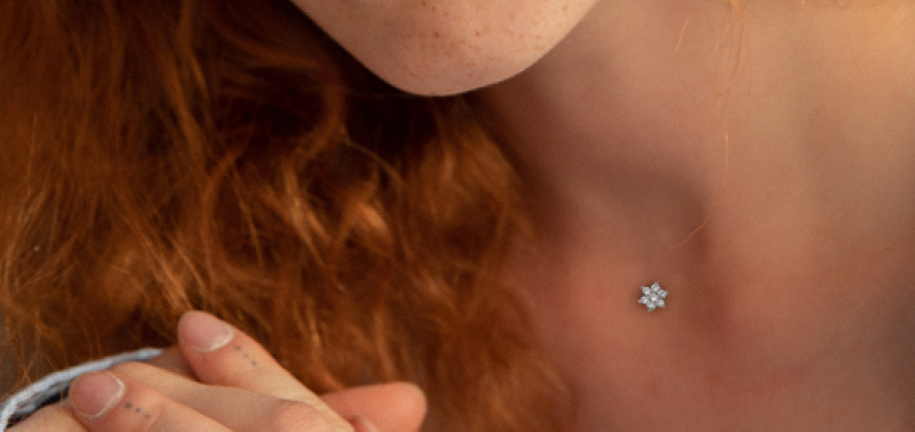
All About Dermal Piercings
Diving into Surface Dermal Piercings: Everything You Need to Know
The , a 1-point piercing, has become extremely popular in recent years. You can wear dermal anchors on many body parts, like the chest, around the eyes and ears, and on your arms.
With dermal piercings, the possibilities are endless.
Unlike other piercings, the jewelry has an interchangeable decorative part and another piece placed under the skin. The part under the skin can be a single-point anchor or a base with a footer anchor. Both of them are inserted a few millimeters under the skin. They contain a threaded rod onto which the beautiful tops are screwed.
When talking about 1-point piercings, you might have heard about Skin divers. The skin diver has similarities to the dermal anchor, but the main difference is that they are single pieces, so you can’t interchange their tops.


How do I get a dermal piercing done?
- First, you and your piercer have to decide where on your body the piercing will fit best.
- Once you have agreed on the location and your piercer has disinfected the area, your piercer will make a cavity with a hollow needle or a dermal punch. Then they will insert the dermal base with the help of a dermal anchor insertion tool.
- Some piercers use a regular piercing needle; both methods are correct.
- Finally, the top will be screwed on.
What jewelry should I wear on my dermal piercing?
When it comes to jewelry choices for dermal piercing, it's almost only your imagination that sets the limit, as long as the top ball is externally threaded.
Dermal anchor balls have a thread thickness of 1.2 mm. But if you want a 1.6 mm top for your dermal, you can use a converter pin.
Remember not to change the ball until the piercing has completely healed. If you change it before, you might turn the base under the skin, which can have unpleasant consequences. Once healed, you can choose to wear gold, or surgical steel tops, among others.
How can I take care of my dermal piercing?
Dermal piercings require a relatively long healing time, usually 3 to 4 months. Therefore it’s important to be patient and careful. The most important thing during the healing period is to follow your piercer's instructions and not touch the piercing more than necessary.
If your piercing top puts too much pressure on your piercing, you may think about wearing an extension post to increase the distance between your skin and the decorative top. Another solution is to wear a healing post to reduce the pressure on the skin.

Posted in:

